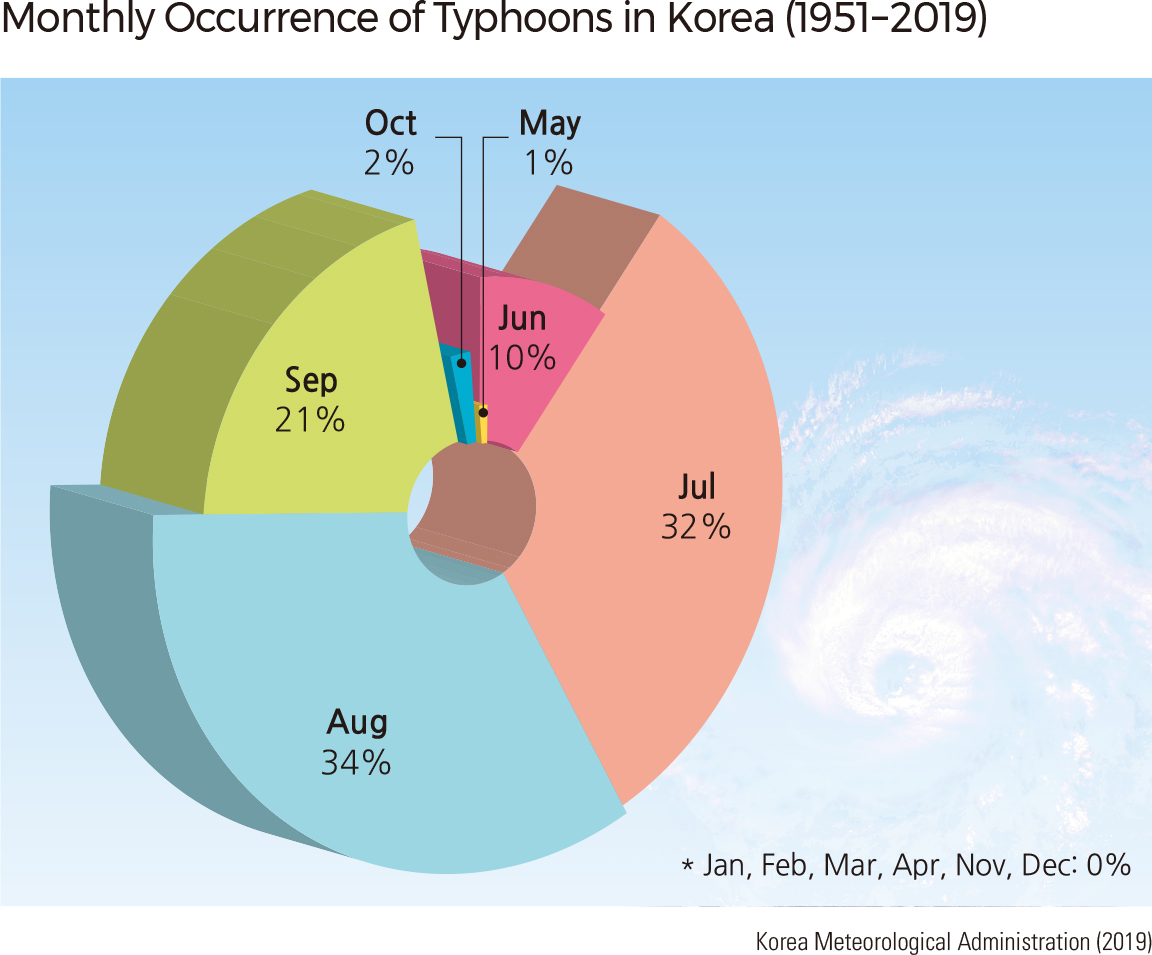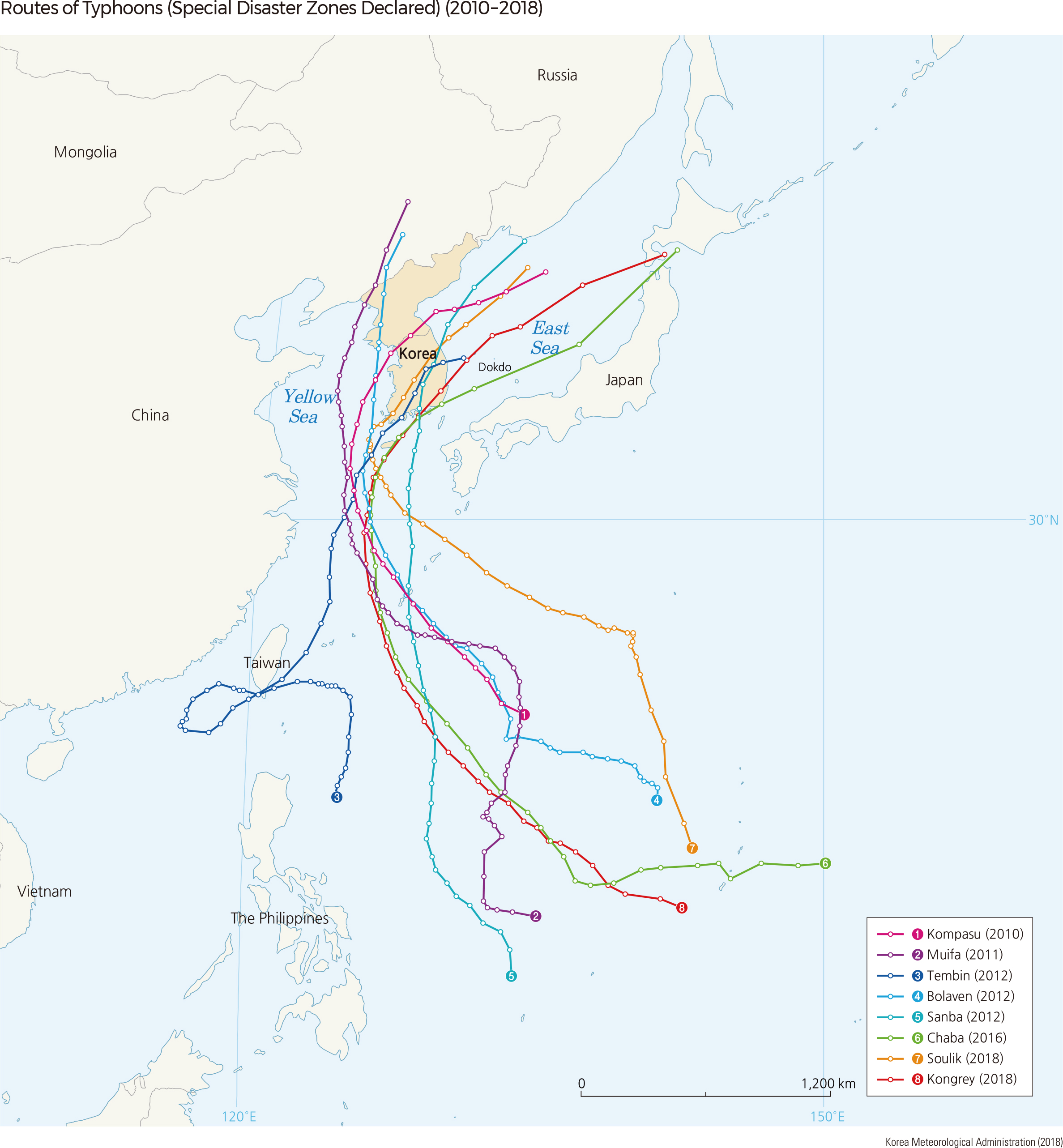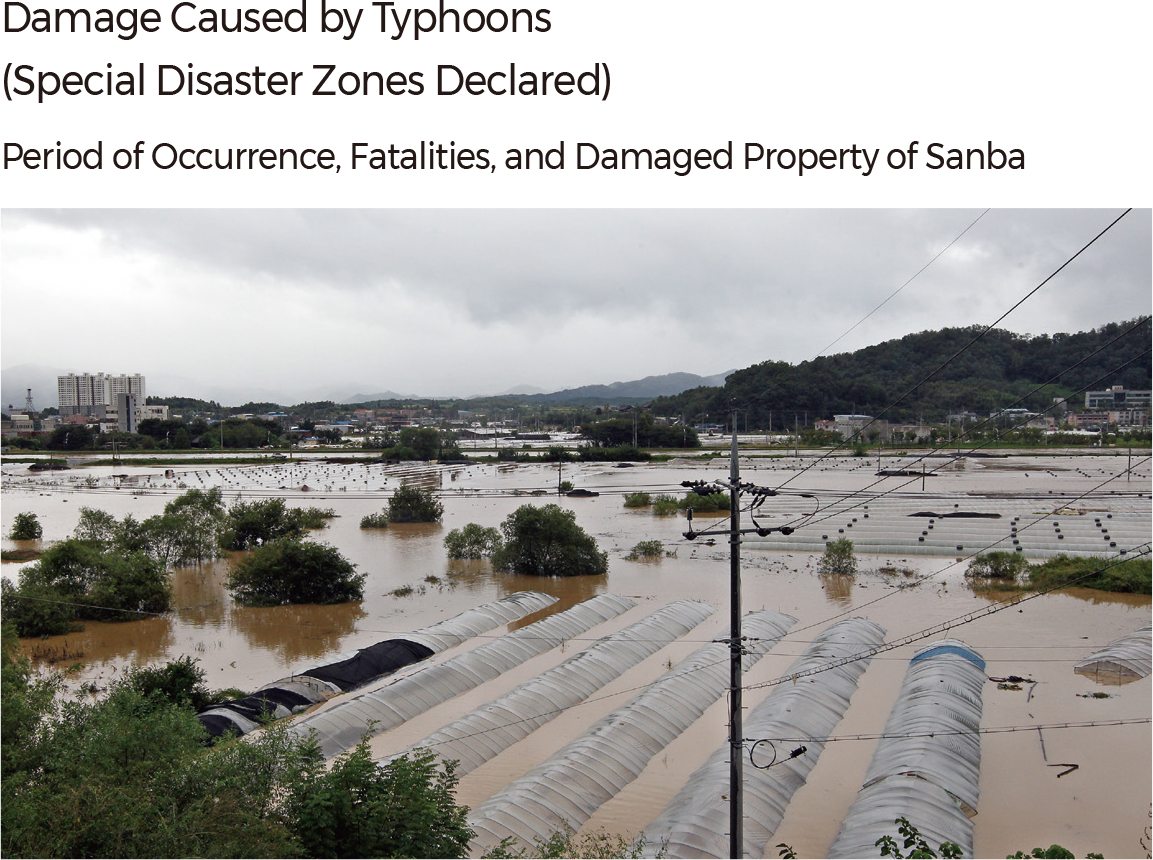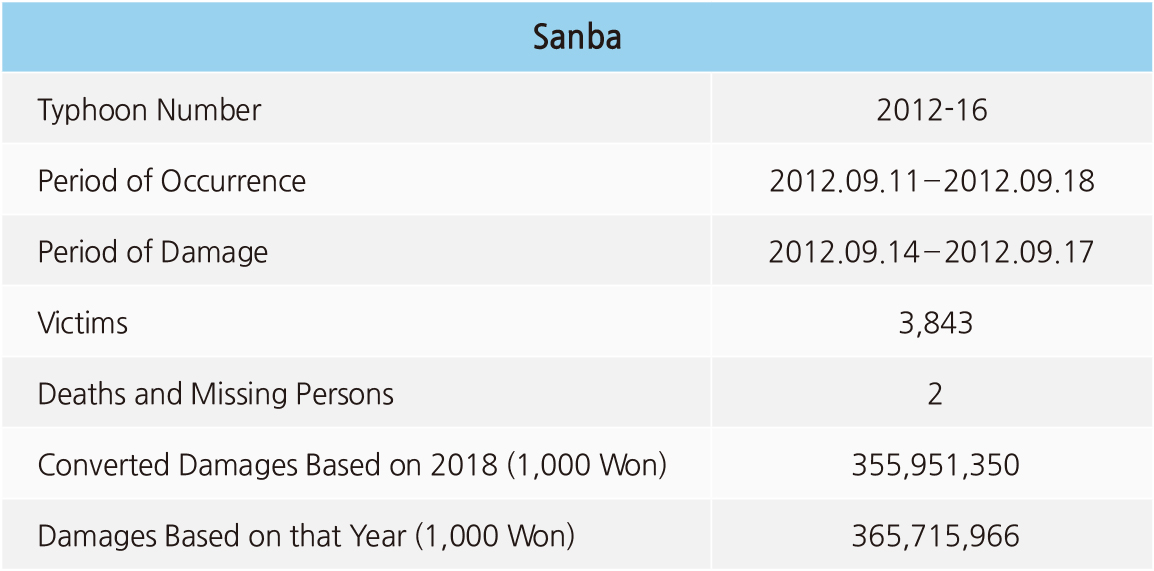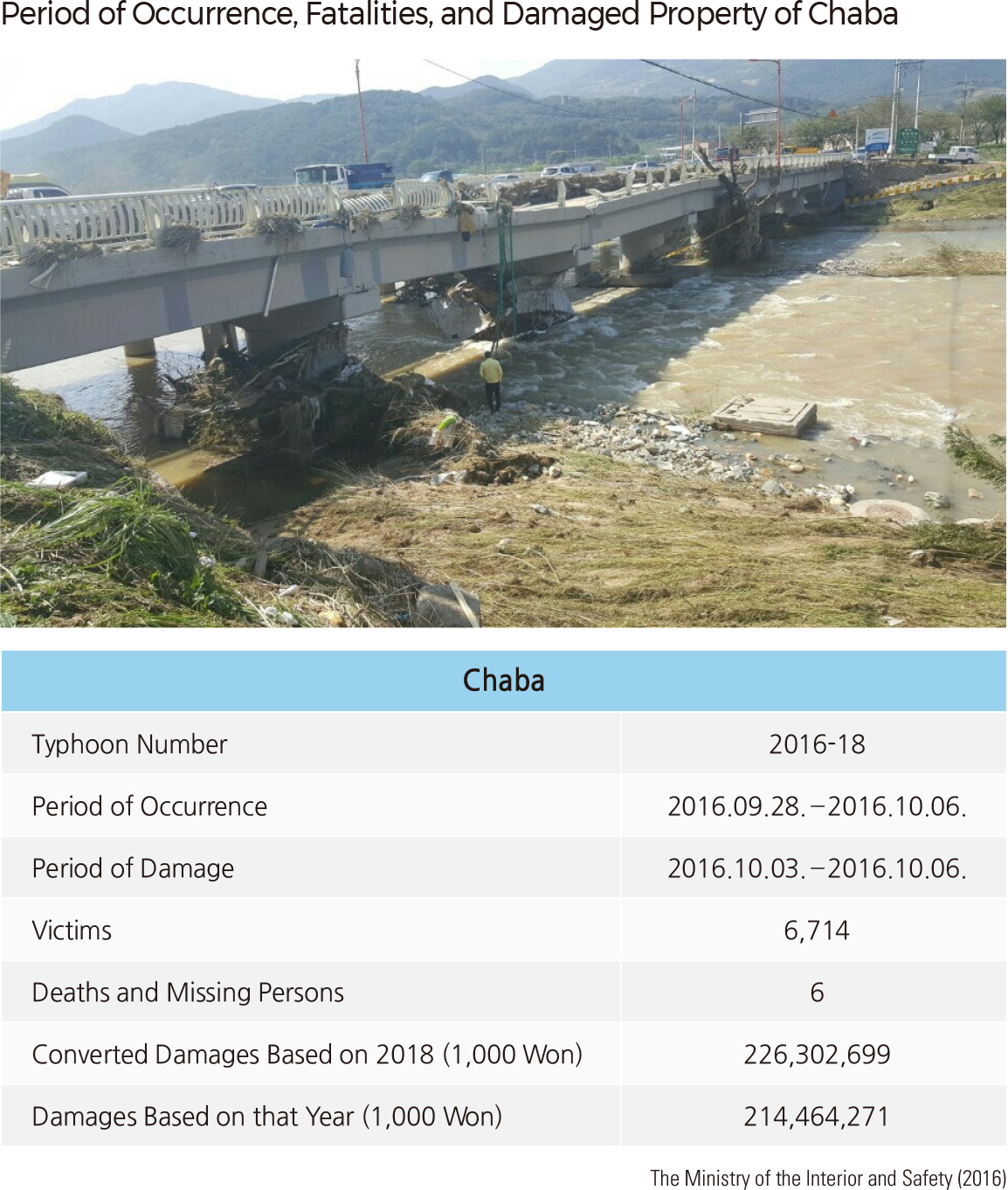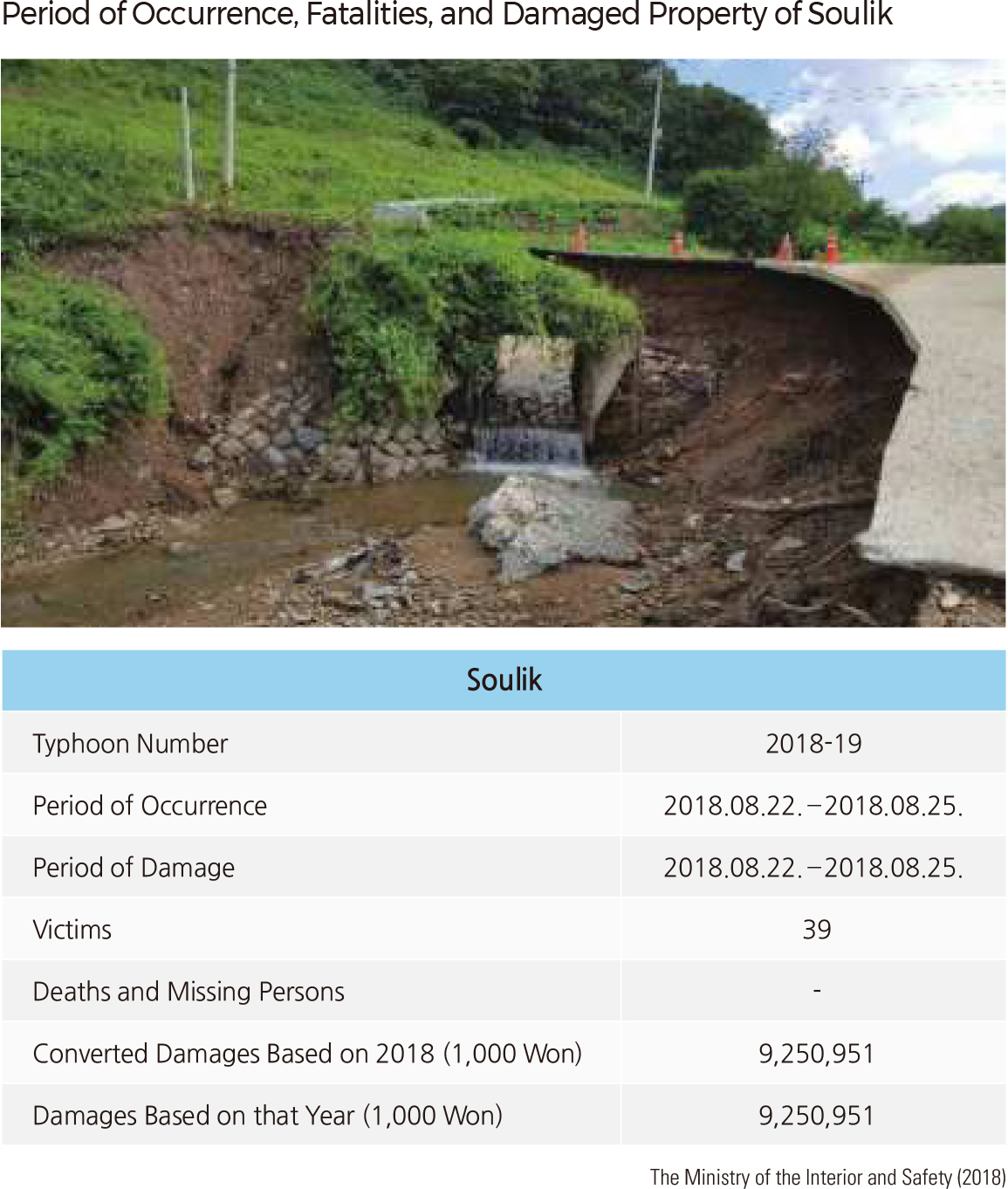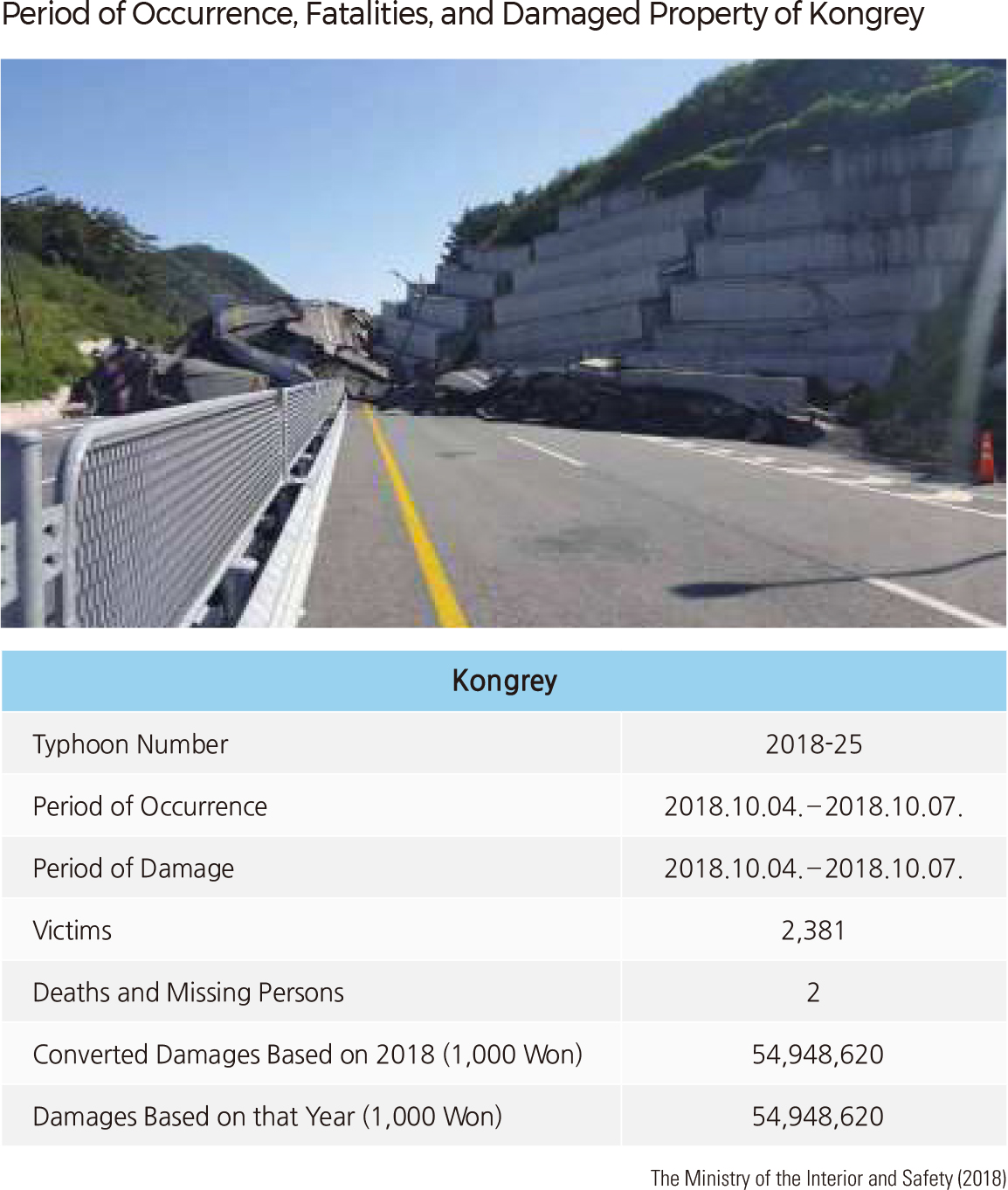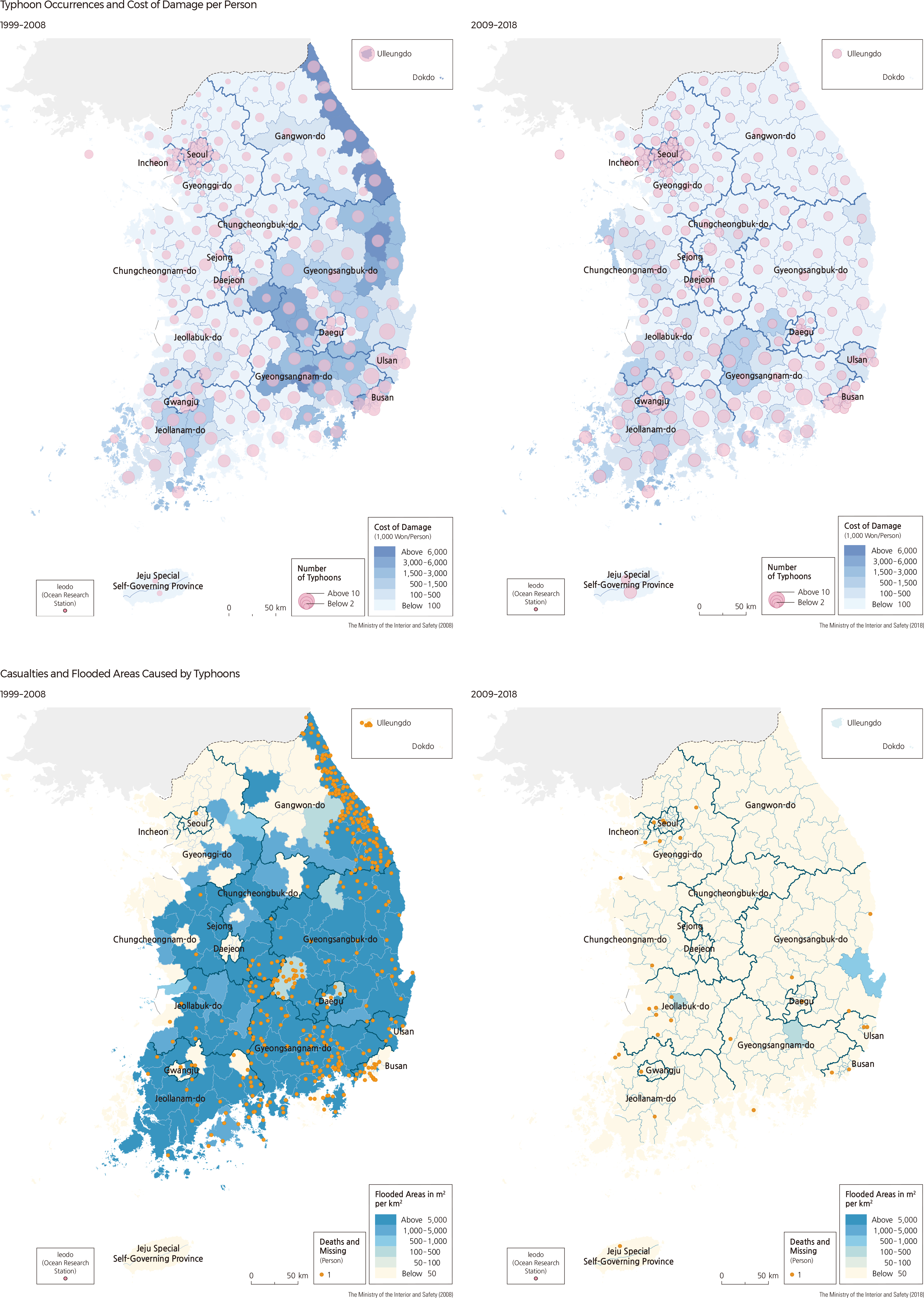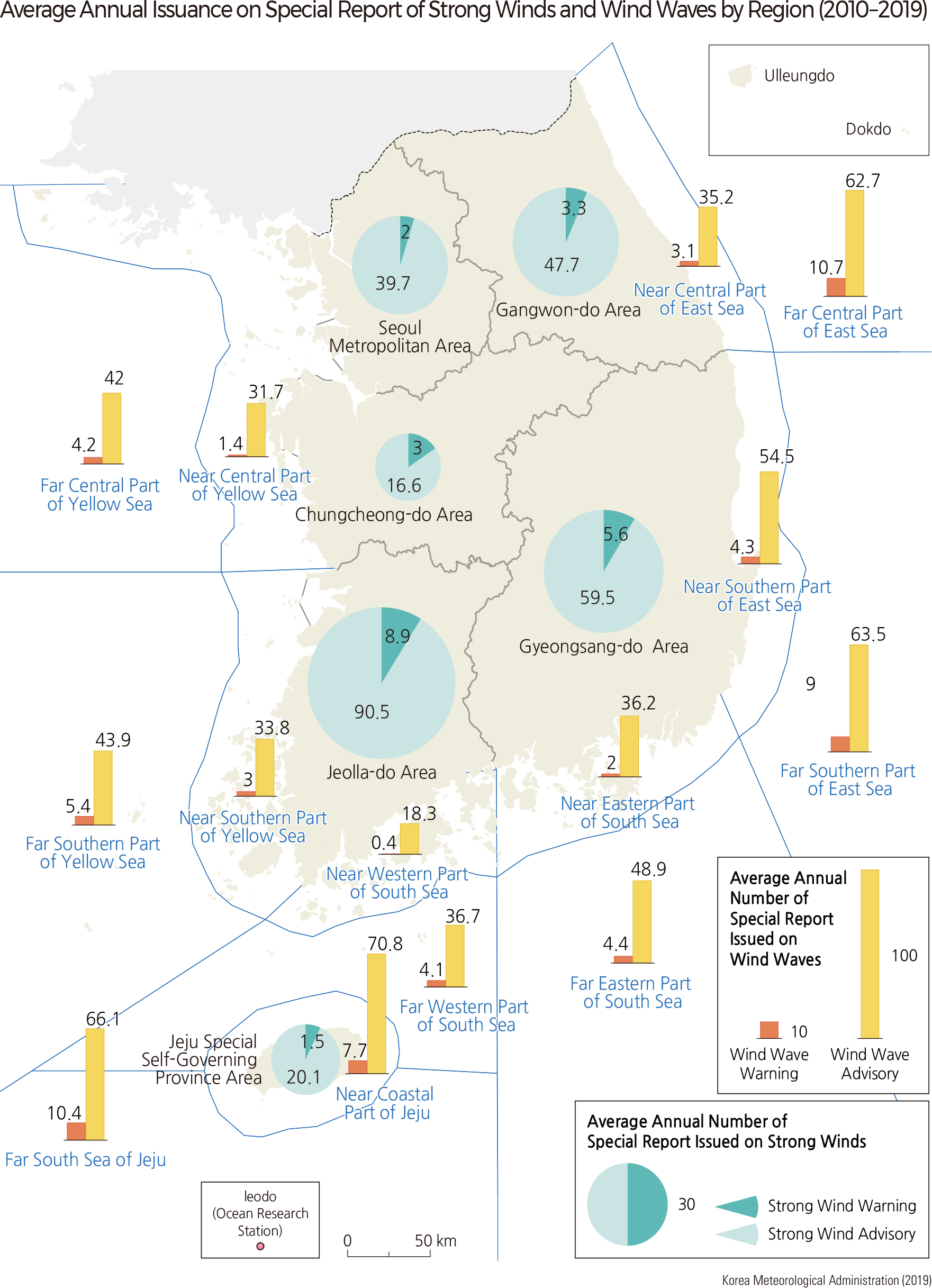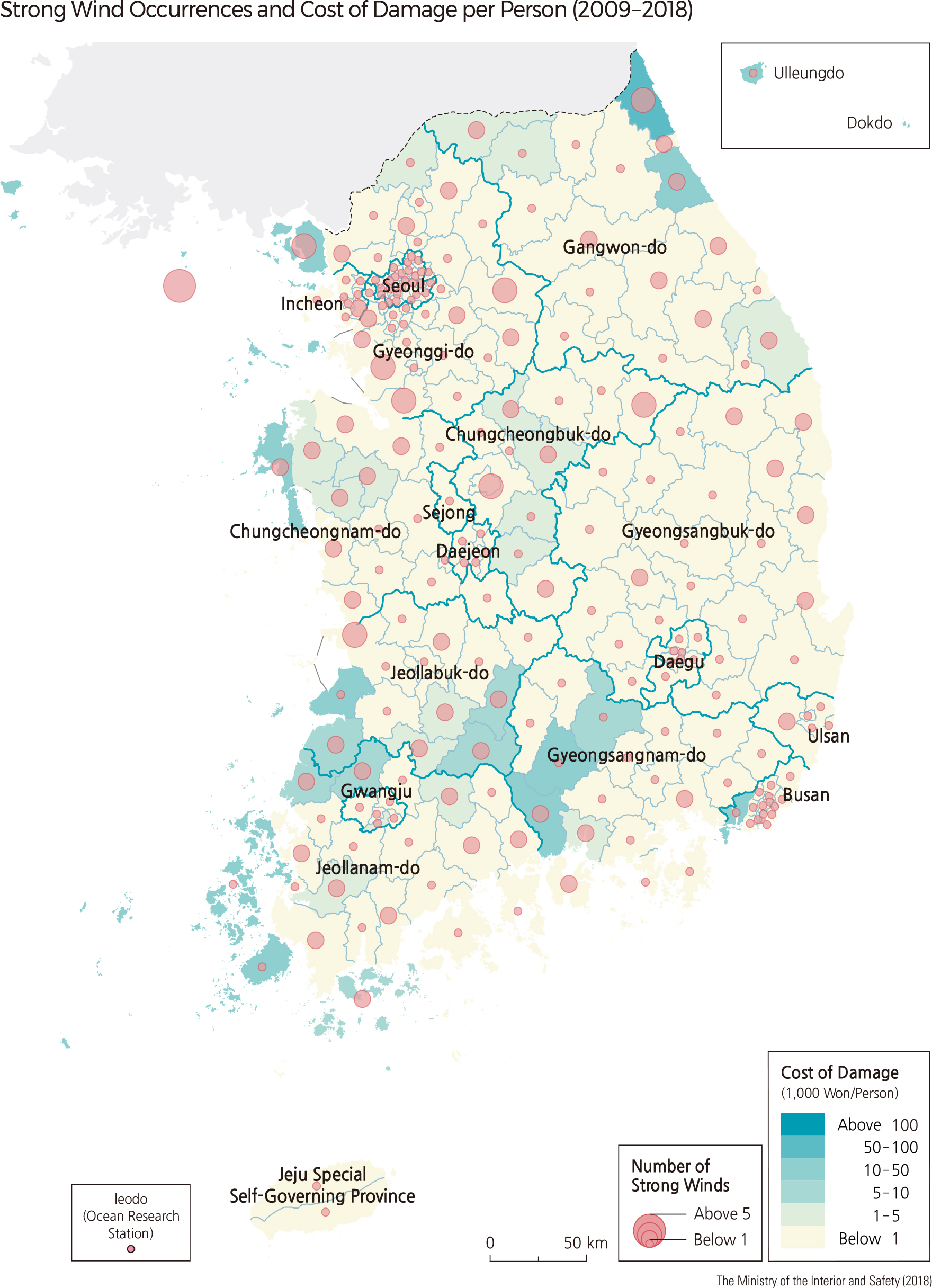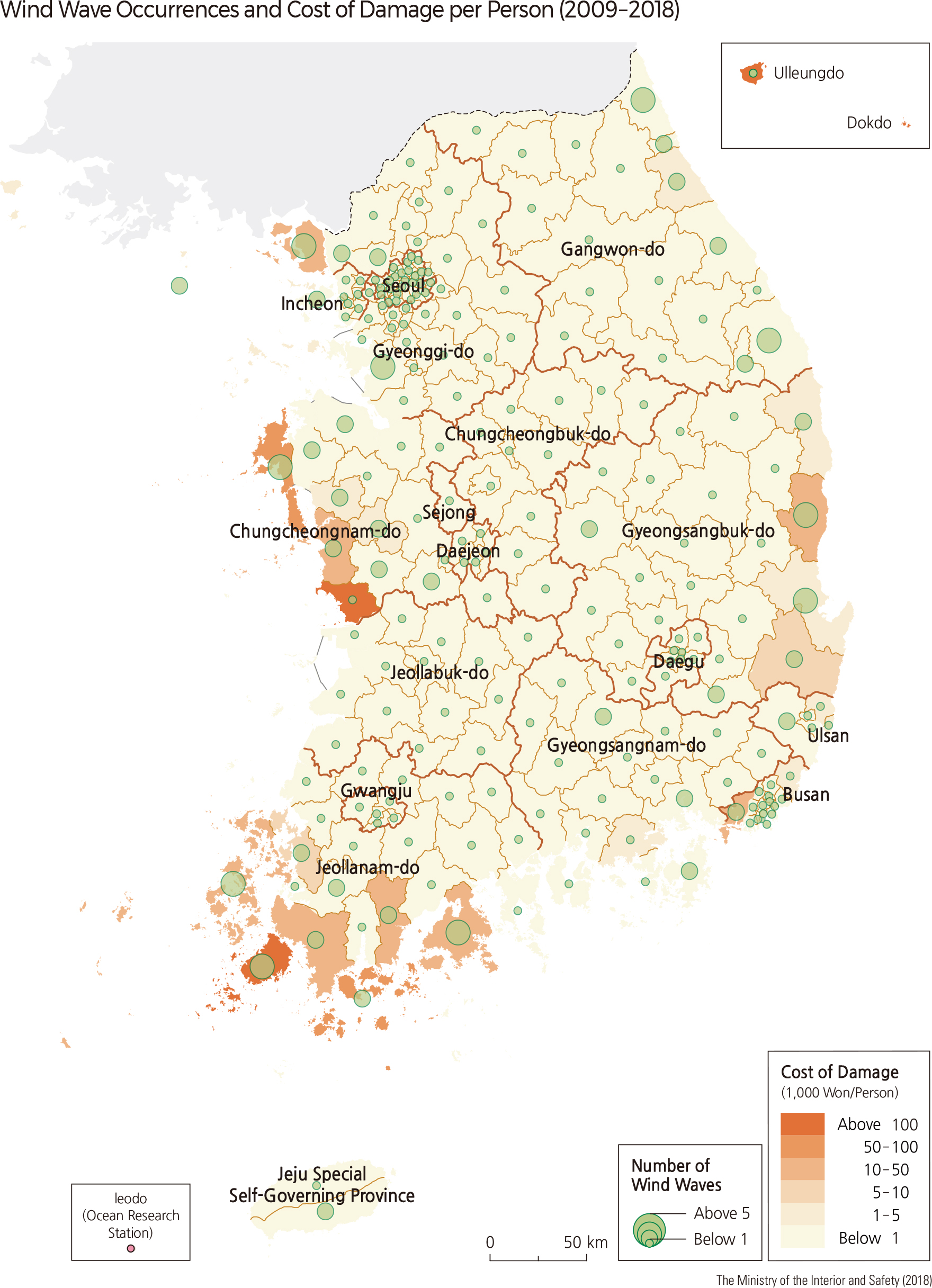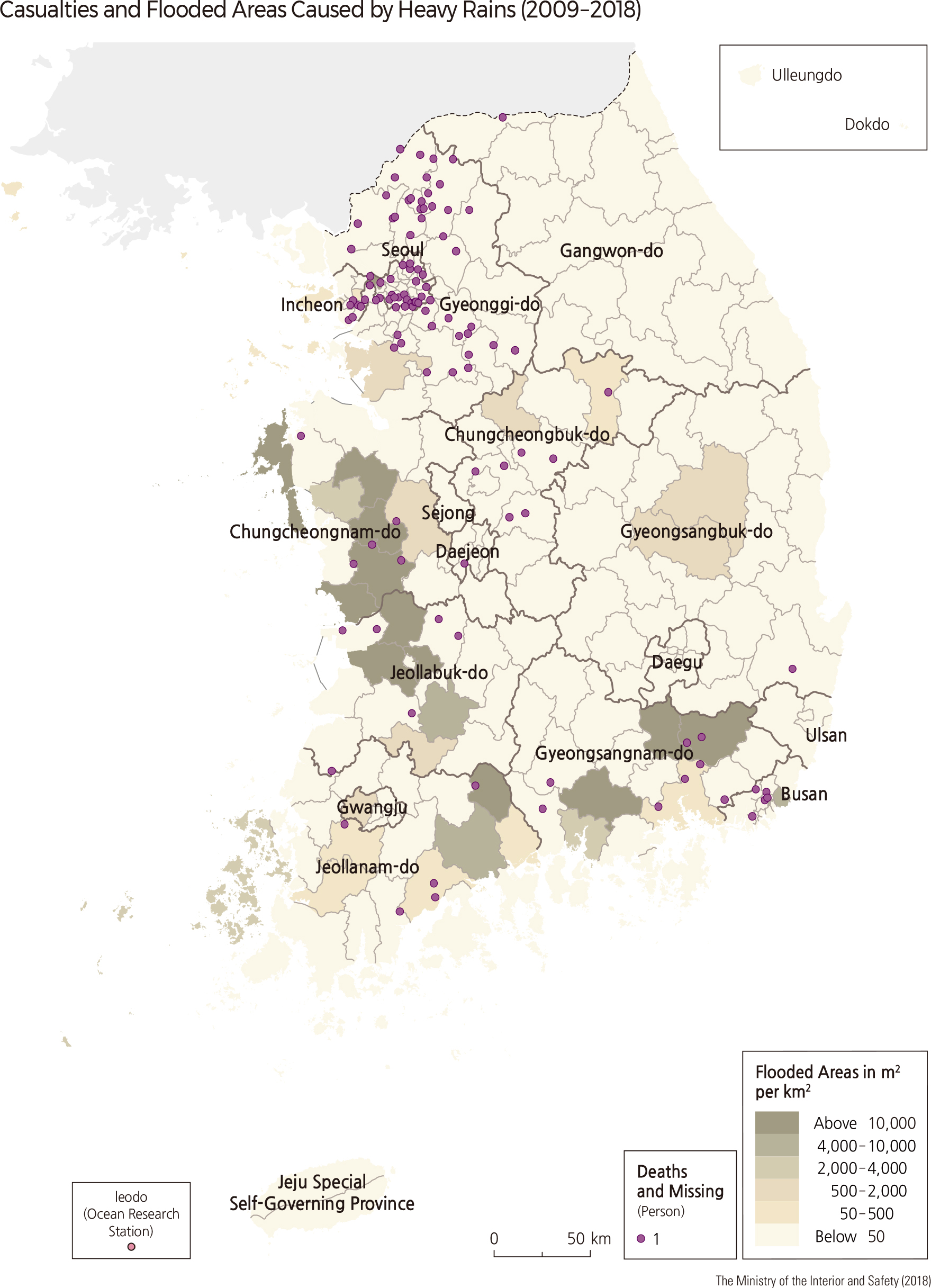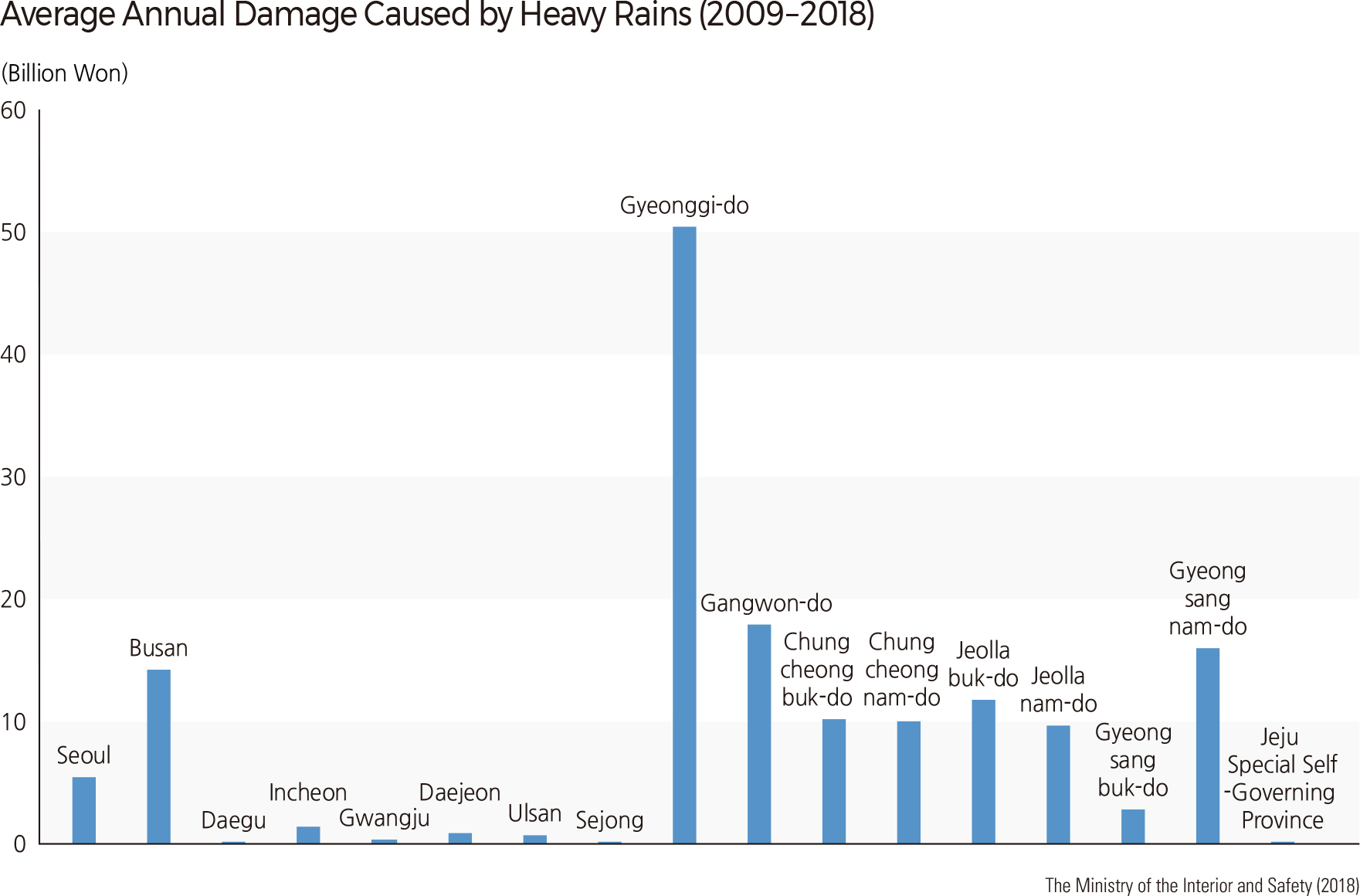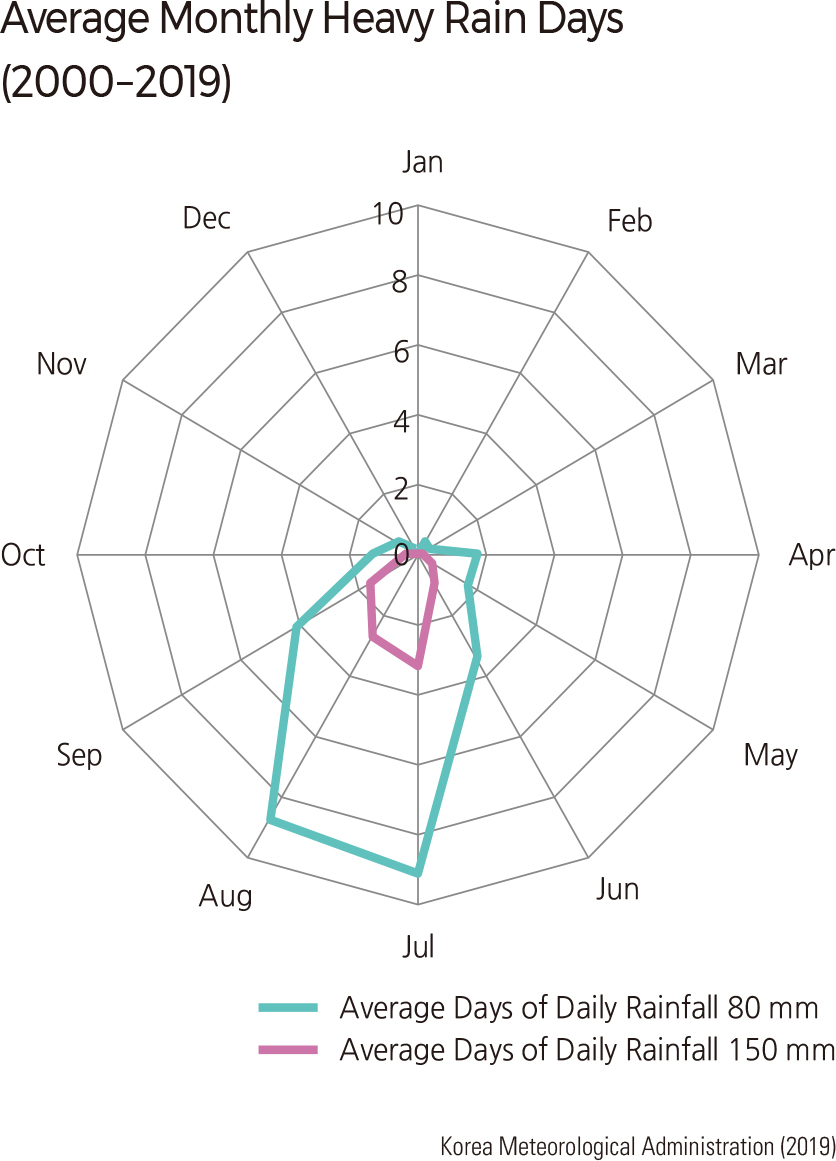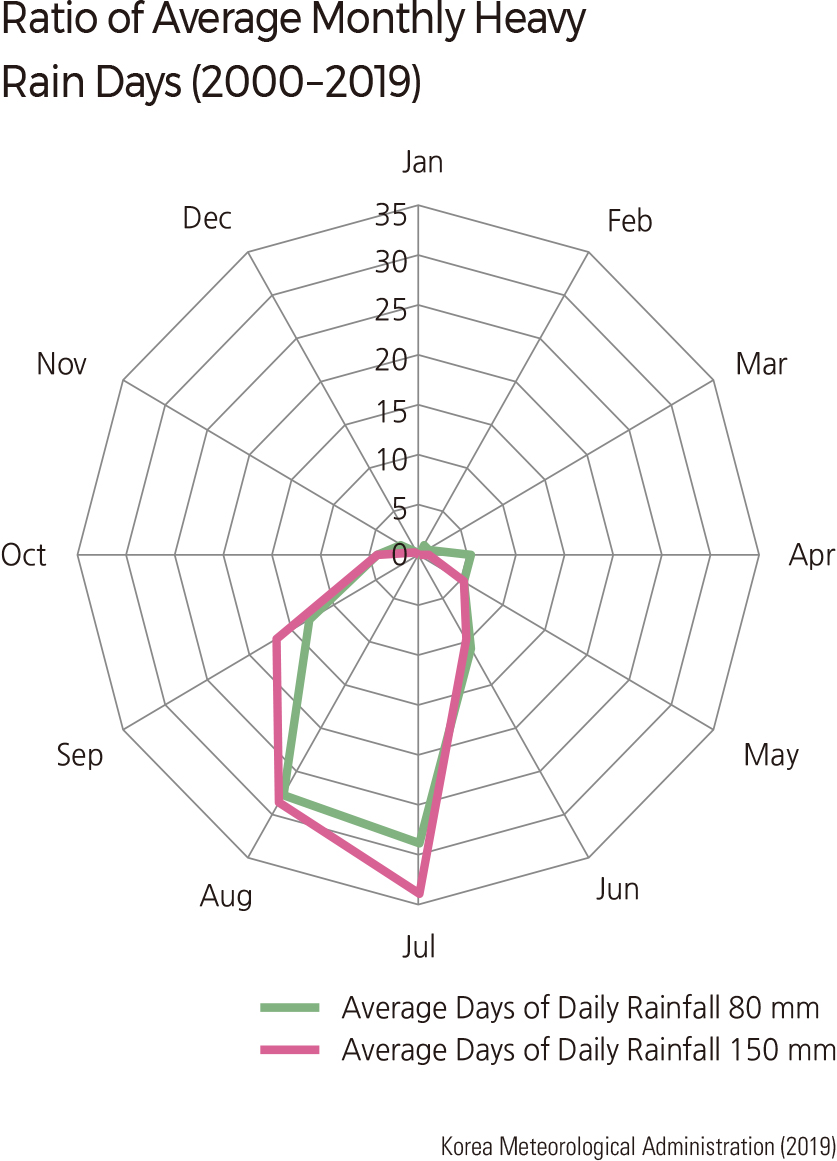English II 2020
Typhoons occur when the wind speed exceeds 17 m/s, accompanied by heavy rain. A typhoon is a type of tropical cyclone that originates in the western part of the North Pacific Ocean. Typhoons vary in size; small typhoons are measured as 200 km in diameter, while large typhoons span over 1,500 km.
Since 1995, Special Disaster Zones have been designated 17 times. Among them, 11 were due to typhoons, including Rusa (September 16, 2002), Maemi (September 22, 2003), Ewiniar (July 18 and August 10, 2006), Nari (September 20 and October 8, 2007), Kompasu (September 16, 2010), Muifa (August 19 and September 2, 2011), Tembin and Bolaven (September 3, 4, 5, and 13, 2012), Sanba (September 26, 2012), Chaba (October 10 and 17, 2016), and Soulik (September 26, 2018).
A wind disaster is caused by particularly strong winds that have reached critical wind speeds. Special weather reports differentiate between strong wind, which refers to wind on the land, and wind waves, which refers to wind and associated waves on the water. Special reports are issued for strong winds, and wind waves are categorized as advisories or warnings.
A strong wind advisory is issued when the wind speed exceeds 14 m/s or instantaneous wind speed reaches 20 m/s in lowland areas, and when wind speed exceeds 17 m/s or instantaneous wind speed reaches 25 m/s in mountainous areas. A strong wind warning is issued when the wind speed exceeds 21 m/s or instantaneous wind speed reaches 26 m/s in lowland areas, and when wind speed exceeds 24 m/s or instantaneous wind speed reaches 30 m/s in mountainous areas. A wind wave advisory is issued when a sustained wind speed of 14 m/s over the sea lasts more than three hours or wave height exceeds three meters. A wind wave warning is issued when a sustained wind speed of 21 m/s over the sea lasts more than three hours or a significant wave height exceeds five meters.
Floods are natural events that occur when a river or large body of water overflows its banks. Flooding has been the most common natural disaster in Korea over the past 10 years.
Special reports issued for heavy rains are categorized as advisory or warning. A heavy rain advisory is issued when rainfall is expected to exceed 60 mm over a three-hour period or to exceed 110 mm over a 12-hour period. A heavy rain warning is issued when rainfall is expected to exceed 90 mm over a three-hour period or to exceed 180 mm over a 12-hour period.
Special reports issued for flooding are categorized as advisory or warning. A flood advisory is issued when the water level is expected to exceed the advisory water level (water level in excess of 50% of the designed flood discharge capacity). A flood warning is issued when the water level is expected to exceed the warning water level (water level in excess of 70% of the designed flood discharge capacity). |
